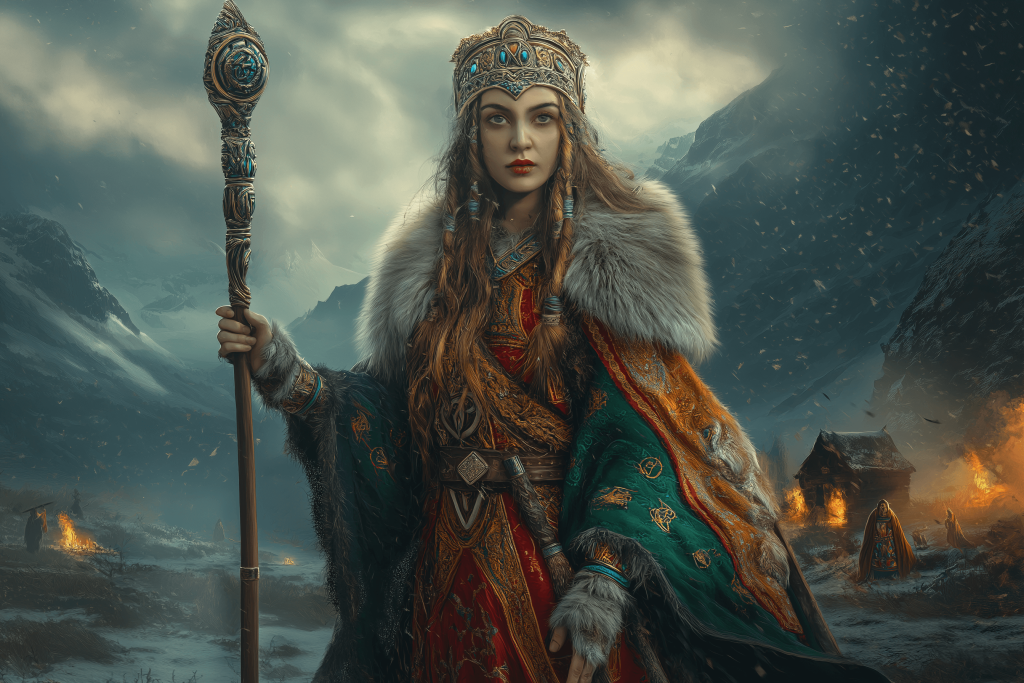Death for the Vikings was not an end, but a transition full of symbolism and honor.
Their vision of the afterlife, combined with complex funeral rites, explains why they did not fear their final destination.
Archaeological finds and Norse sagas reveal that Viking funerals reflected their beliefs, social hierarchies, and the importance of community in the passage to the afterlife.
Viking funeral rites
Viking funerals were social and spiritual events of great importance.
Depending on the rank of the deceased, different forms of burial were practiced.
During burial, the body was placed in a grave accompanied by weapons, tools, jewelry and personal belongings.
Cremation consisted of burning the corpse on funeral pyres or even in boats that were turned into bonfires.
Finally, boat burials were reserved for nobles, chiefs, and high-status figures, who received luxurious grave goods that demonstrated power and prestige.
These rituals were not simple farewells, but acts that sought to guide the soul towards the correct destination, whether Valhalla, Fólkvangr or Helheim.

The role of men and women at funerals
In Viking society, both men and women could play important roles in funerals.
Men, as family leaders or shamans, often led the rituals and accompanied the deceased with prayers and offerings. However, women also played a fundamental spiritual role.
The völvas, priestesses or seers, acted as guides ensuring the passage to the afterlife. Furthermore, high-ranking women were responsible for preparing the body, selecting funerary objects, and performing ritual lamentations.
A famous example is the Oseberg burial in Norway, dating from 834. The bodies of two women were found there, placed in a richly decorated boat measuring 22 meters long. It is believed that one of them may have been a völva, buried with honors similar to those of a warrior chief.
Völvas at Viking funerals
The völvas were essential spiritual figures in Norse religion.
Decorated ritual sticks, remains of broths prepared with hallucinogenic plants used in ceremonies, divination objects, and unique headdresses have been found in some burials.
These findings suggest that the völvas played a mediating role between the world of the living and the world of the dead.
They were often buried with great honors, even in funeral ships, demonstrating the respect and power they held as guides of the soul to the other world.

Beliefs about death
For the Vikings, death was not a tragic end, but a transformation.
Their beliefs were marked by the hope of achieving an honorable destiny.
Warriors who fell in combat aspired to reach Valhalla, Odin's hall, where they would train for Ragnarök.
Another equally honorable option was Fólkvangr, the field of the goddess Freyja, a place also reserved for brave warriors.
Instead, those who died naturally or ingloriously were sent to Helheim, a cold and dark realm ruled by Hel.
Funerals were held in preparation for this journey. The protective symbols and objects placed with the deceased were intended to accompany and assist them in the transition to the afterlife.
The soul did not walk alone, as the entire community bid him farewell with equal reverence and solemnity.
Death as a path to honor
For the Vikings, death did not mean defeat, but the beginning of a transcendental journey.
Their funeral rites, the participation of men and women, and the importance of the völvas show that the afterlife was a reflection of their values of honor, courage, and spirituality.
This vision explains why the Vikings were not afraid of dying in battle: death was, in reality, the gateway to eternity in Valhalla or in the domains of their gods.
Don't miss our Viking Collection in our Medieval Shop









